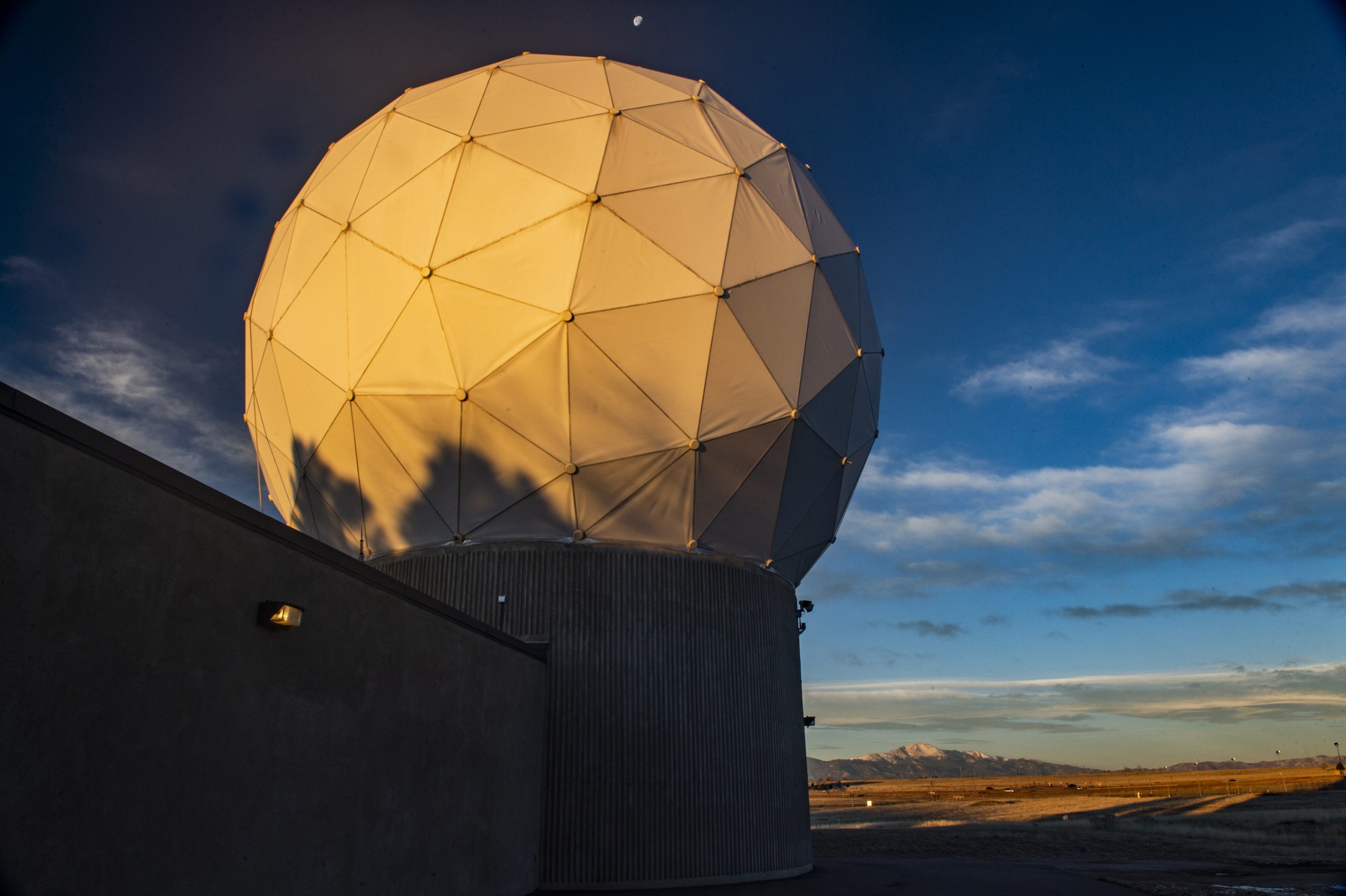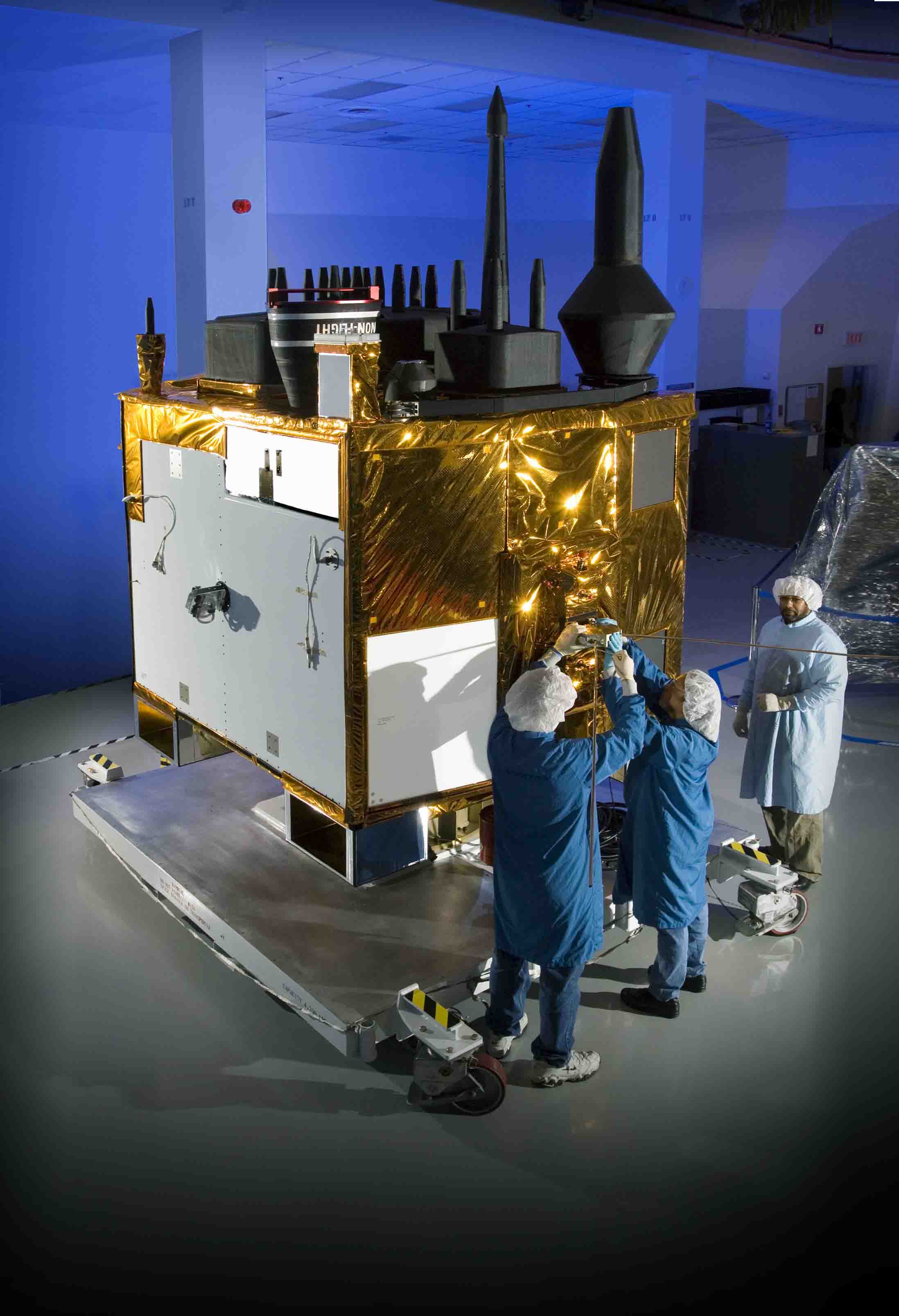The United States Space Force’s Space and Missile Systems Center (SMC) awarded a $228 million contract to Raytheon Intelligence and Space for the GPS Next-Generation Operational Control System (OCX) Follow-On (OCX 3F).
The OCX 3F program is further future iteration of the GPS Enterprise Modernization effort. OCX comes in four blocks: 0, 1, 2 and now 3F. Only Block 0 is currently operative, though it does not “fly” the constellation, it only handles Launch and Early Orbit (LEO) operations and the on-orbit checkout of all GPS III satellites. It has done so for four GPS III satellites so far. A fifth launch is due in June.
[Photo: GPS ground antenna at Schriever Air Force Base, home of the 50th Space Wing. Courtesy Raytheon]
Currently, all GPS satellites are controlled by the Operational Control System (OCS), which Lockheed Martin sustains until 2025, when OCX will start taking over. OCS now flies the more powerful GPS IIIs as well as older satellites and tasks, uploads and monitors the encrypted M-Code signals.
OCX Blocks 1 & 2 System, planned for delivery in 2022, will support the latest Department of Defense (DoD) standards and practices for cybersecurity, it also supports a number of advanced features over the legacy GPS Ground Segment. These new features include an enhanced and expanded monitor station network for improved cybersecurity and improved anti-jam capability, enhanced operational capability to control the modernized military signals, support of GPS III boosted earth coverage Military code (M-code), and the monitoring of new Galileo-compatible and safety-of-life signals.
OCX 3F will upgrade the OCX Blocks 1 & 2 system (not yet online) to utilize the enhanced capabilities of the new GPS IIIF space vehicles being developed by Lockheed Martin. Raytheon Intelligence and Space will perform the work in Aurora, Colorado, and delivery is expected in July 2025.
“OCX is an adaptive architecture designed to evolve to combat emerging threats. OCX 3F is a great example of modifying the OCX Blocks 1 and 2 software baseline to launch and incorporate the GPS IIIF enhanced satellite capabilities. I look forward to continuing our relationship with Raytheon in delivering the United States Space Force GPS capabilities,” said Barbara Baker, SMC Production Corps Command and Control Systems Division’s senior materiel leader.
OCX has been long arriving, due in part to continually evolving requirement from the Department of Defense, as GPS III modernization features underwent changes. In March 2020, the SMC directed Raytheon to replace the IBM computer hardware in OCX prior to system delivery due to sale of IBM’s computer product line to a Chinese company, Lenovo. Prior to that, OCX had been in a Congressional Nunn-McCurdy breach, subject to investigation, for exceeding its cost estimates by more than 25 percent.
Earlier this year, the OCX Ground System Simulator received accreditation. The Ground System Simulator (GSYS) mimics critical tasks of GPS ground control, including constellation management of more than 40 satellite simulations, replicating the command and control of 17 monitor stations, four ground antennas, as well as simulating the entire satellite lifecycle from launch to disposal.
Earlier this month, Raytheon announced that it had completed final qualification testing of the OCX system’s modernized monitor station receivers, which are now ready to be installed around the world starting in August
Raytheon Intelligence & Space will finish qualification of the baseline OCX software and deliver it to Space Force this year for validation; and “final handover” of “the software and hardware that the system is going to run on” will take place in 2022.






